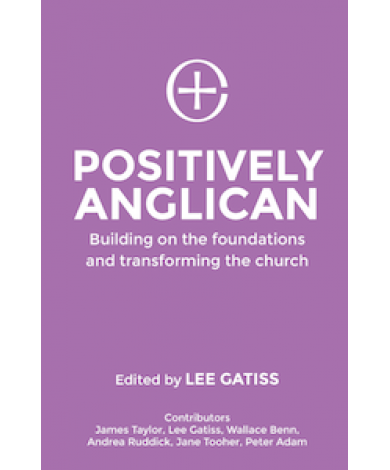Positively Anglican – A Review


Positively Anglican is the latest publication from the Anglican charity Church Society and it seeks to do exactly what it says on the tin, complementing recent resources like The Effective Anglican and Confident and Equipped in providing a punchy, practical, and theologically engaged encouragement for those seeking to positively uphold historic Anglicanism (as expressed in the 39 Articles of Religion, the Prayer Book, and the Ordinal).
It’s an old adage but within the church some of us can quickly slip into putting more weight on communicating what we’re against, rather than what we’re for. As the title suggests, this easily-digestible collection of essays tries to rebalance the scales. Of course there is a need for nuance and realism here. Being against one thing and for another thing do not have to be mutually exclusive positions, and no doubt some will highlight how the Church of England itself began in reaction or protestation against error. So perhaps the question this book helps to raise is ultimately, “what is our posture as we live and minister as those who would identify as evangelicals within the Church?”
Like the other two books mentioned above, most of the chapters within Positively Anglican were originally presentations from conference material. In this case they are taken from Church Society’s annual conference in 2014 & 2015 – and generally speaking it feels like they’ve carried over well into written form. There are seven contributions in total, coming from both lay and ordained voices, and ranging from the general (e.g. the experienced Peter Adam’s gutsy “Imagining our Anglican Future”) to the specific (retired bishop Wallace Benn in fascinating form on “Evangelical Episcopacy”).
It was particularly refreshing to read two female writers coming from the perspective of a complementarian view of ministry. When the Church of England’s General Synod voted to allow women to be Bishops in 2014, it also put together five Guiding Principles which are meant to ensure mutual flourishing of those who differ as to what they believe the Scriptures teach on this issue. These principles acknowledge that the complementarian position is “within the spectrum of teaching and tradition of the Anglican Communion,” and therefore “the Church of England remains committed to enabling [those who hold this position] to flourish within its life and structures”. Sometimes it seems to be assumed that it’s only men who actually hold to this position, but Jane Tooher and Andrea Ruddick’s earnest and earthed chapters evidently burst this bubble. As well as demonstrating that there are both women and men who sincerely believe the Scriptures communicate an equality and distinction between the sexes, these chapters also convey a prayerful and responsible desire to consider what this looks like in practice.
Editor Lee Gatiss also provides two chapters of his own: one looks at the legendary preacher George Whitefield, taking us back to his Anglican convictions. I was inspired, and yet Gatiss isn’t afraid to gently suggest lessons to learn where necessary either. Gatiss’ second contribution, ‘How to Transform a Church’, gives substance to the slogan, ‘Preach, Pray, Love, Stay’, which no doubt a lot of us could take to heart. There is also a opening chapter from James Taylor, reflecting on John Stott’s classic answer as to why he still ‘believed’ in the Church of England, with Taylor considering whether it’s still relevant some thirty years later.
Occasionally I felt like I was wanting a few more specifics, in terms of examples or applications, but maybe that’s to be expected when the book is comprised of fairly prompt chapters originally presented in a conference set-up. The flip-side of this is that it makes the volume just the right format for dipping into a whole range of topics whilst still being stimulating and energising.
Positively Anglican encourages a generation of men and women to own their Anglicanism in a manner that is less reactionary and more front-foot positivity, modelling a compelling vision for an evangelical Anglicanism that is heartily committed to the Church of England. It’ll be well worth putting into the hands of wardens and lay leaders, as well as ordinands, curates and incumbents.
Disclaimer: The publisher has sent me a free copy of this book, but I hope this is still a fair and honest review.